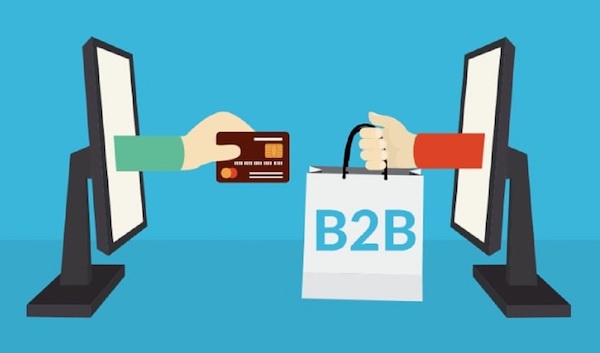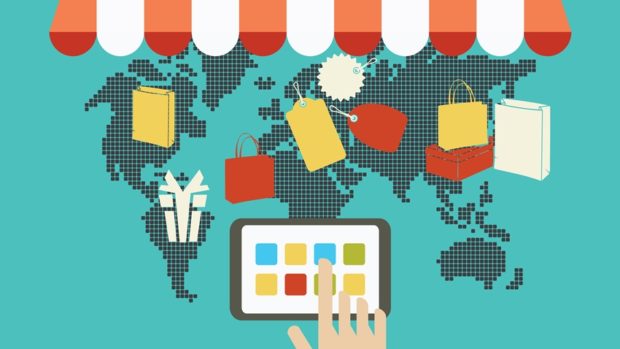
It’s no secret that a new generation of business-to-business (B2B) customers is rising for organisations. Raised as “digital natives,” they expect a consumer-like experience while transacting business online. Yet businesses aren’t taking advantage of this new opportunity.
The global B2B eCommerce market size was valued at over £4 trillion last year, and is expected to grow. This is especially true in a post-covid world. Our recent research showed that 81 per cent of decision makers are looking to overhaul business strategies with innovation as a result of the pandemic.
Changing expectations
Companies are seeing the twilight of the classic ‘catalogue, rolodex and phone bank’ approach to B2B sales. It is twilight, but it’s likely to be a long one as companies re-engineer business processes and invest in technology to adapt to today’s new reality. But there’s no denying that eCommerce has been a disruptor in B2B sales. Customer expectations and attitudes continue to evolve, influenced by the prevalence of digital commerce in day-to-day life. It would be highly unlikely to find anyone who hasn’t ordered something on Amazon or booked travel through Expedia. These same buyers expect that their corporate purchases can be made in comparable ways. Some of this change is generational in nature. Those who have grown up with technology are less likely to answer or pick up the phone to order goods. However, over 70 per cent of 20 – 35 year olds are involved in the decision-making process for product or service purchase decisions in their companies.
The ideal B2B site
Implicit in the size and growth rates of B2B eCommerce is the notion that competitive business is up for grabs. The company with the best B2B eCommerce experience will be in a position to lure new business in the digital door. B2B sites that look dated and clunky are not conducive to selling today, they need to have a B2C style user experience. Boxy, text-heavy user interfaces do not appeal to modern B2B customers. A B2B site with a friendly, intuitive look and feel of a consumer site can give the buyer a comfortable, familiar feeling.
Mobility also is a factor for a good B2B site. With more workers on the move, online business has naturally moved to mobile form factors at the same time. Consumers need to be able to browse sites and order using tablets and phones. Likewise, those who are accustomed to shopping online want to feel that they are getting all the information they need to make a purchase decision. This means presenting detail-rich, complete online catalogues.
For more complex sales, configure-price-quote (CPQ) solutions enable sellers to generate accurate and highly configured quotes and automating complex product, pricing, and business rules. A robust CPQ solution can make it easier to deliver the right product at the right price, to every customer. A streamlined sales process guides eCommerce customers, sales teams, call centre representatives, and partners in selecting and validating the right products and services.
B2B needs the same approach
For years, the retail industry has been pushing for better experiences with customers, and consumers expect nothing less. B2B is no different. It’s why an omnichannel experience is essential to provide customers with what they need, when they need it. That might mean browsing the site, choosing product, but then ordering over the phone and picking it up at a warehouse location. It might mean asking questions over the phone, having the phone-based sales rep set up the shopping cart on the site and then letting the buyer make the actual purchase online. Data about the client’s history can make the omnichannel experience powerful for the company. If a buyer logs in and sees intelligent product recommendations based on past history and other factors, like location and season, that will encourage him or her to buy on your site.
Sometimes, only the phone will do, even in this day and age. For those who do still pick up the phone, the B2B site must incorporate a way to contact a knowledgeable sales rep in real time. This may seem counterproductive, but the overall goal of the site is to contribute to a sustainable, profitable, long-term client relationship. If that means fielding phone calls from the website, that’s a good thing.
Prioritising users
As a new generation of digital native customers come online, it’s essential to meet their expectations of seamless online ordering. The challenge is to build a B2B eCommerce site that delivers the right kind of user experience. To work, it needs deep B2B functionality presented in a consumer-style interface. An effective B2B eCommerce site is one that offers a low friction experience. This can be achieved by matching industry norms, such as delivery times. Pulling in data from multiple sources also reduces friction by providing whatever level of information detail users expect.
Doing B2B eCommerce well is a challenging proposition. However, by providing great experiences supported by a completely functional site it is possible to succeed.
By Samantha Mansfield, Head of Strategy EMEA, LiveArea, a Merkel Company








Share